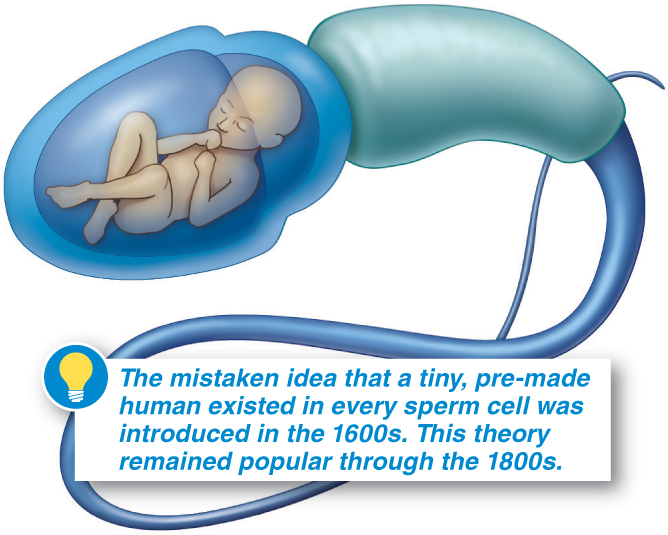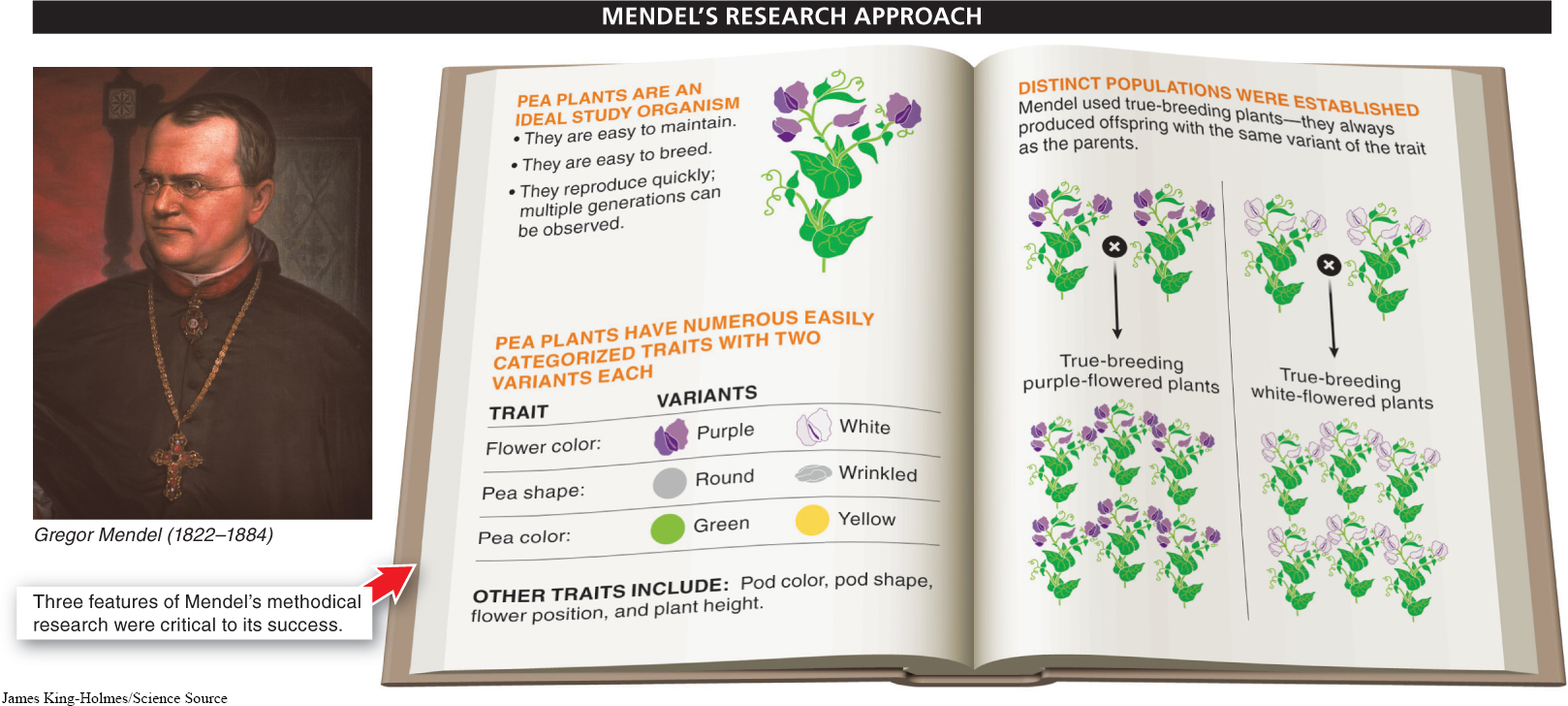What do parents “give” their offspring that confers similarity? It wasn’t until the mid-
Individuals who share common ancestry are called “blood relatives,” yet they don’t actually share any blood. How might the phrase “blood relatives” be a reflection of early conceptions of inheritance?
When Mendel turned to questions about heredity, there were no obvious answers. One idea that had been popular since the late 1600s suggested that an entire pre-

Sometimes scientific breakthroughs are made because a new technique is invented or a lucky observation is made by chance. Neither played a role in Mendel’s success. He didn’t do anything radically new, but simply applied the tried-

- 1. He chose a good organism to study: the garden pea. It’s not that Mendel had a particular fondness for vegetables. Moreover, his goals were to understand inheritance in all organisms, not just plants. But cats and dogs or even mice wouldn’t have served his purposes very well, because they would have been too hard to take care of in the large numbers he required—
thousands and thousands of individuals. Humans, too, would have made a terrible study organism. We take too long to breed (and won’t produce offspring on command). Pea plants, on the other hand, were simply the right tool. They are relatively easy to fertilize manually by “pollen dusting.” A single cross—the process in which male pollen (carrying sperm) is used to fertilize eggs— produces numerous offspring. In addition, pea plants reproduce quickly, so Mendel could conduct experiments that included multiple generations.
- 2. Mendel chose to focus on easily categorized traits like shape and color. For instance, all peas of the variety that Mendel studied are either round or wrinkled in shape, with nothing in between. In addition, all peas are either yellow or green in color, never any intermediate shade. In all, Mendel looked at seven different traits of the pea plants, but for each trait only two variants ever appeared. Mendel and his research assistants could easily observe and unambiguously identify the trait variants.
- 3. Mendel began his studies by first repeatedly breeding together similar plants until he had many distinct populations, each of which was unvarying for a particular trait. He described these plants as true-
breeding for that trait because they always produced offspring with the same variant of the trait as the parents. For example, when true-breeding round- pea plants were crossed together, they always produced plants with round peas. True- breeding purple- flowered pea plants always produced purple- flowered offspring, while true- breeding white- flowered pea plants always produced white- flowered offspring. It took a lot of prep work to establish these populations, but once Mendel had them, he was in a position to set up all of the different crosses that enabled him to piece together the genetics puzzle.
283
Once he had obtained his groups of true-
There was a simple elegance to Mendel’s work: from his predictions he articulated simple questions that could be answered by his experiments. For example, “If I cross a plant that produces wrinkled peas with a plant that produces smooth peas, will the offspring plants produce wrinkled or smooth peas?” His crosses would come out either one way or the other. Everything was black and white. This process of performing well-
TAKE-HOME MESSAGE 7.3
In the mid-
Why were pea plants a good choice for Mendel to study heredity?
Pea plants produce many offspring in a relatively short amount of time. Also, pea plants are relatively easy to fertilize manually.
284